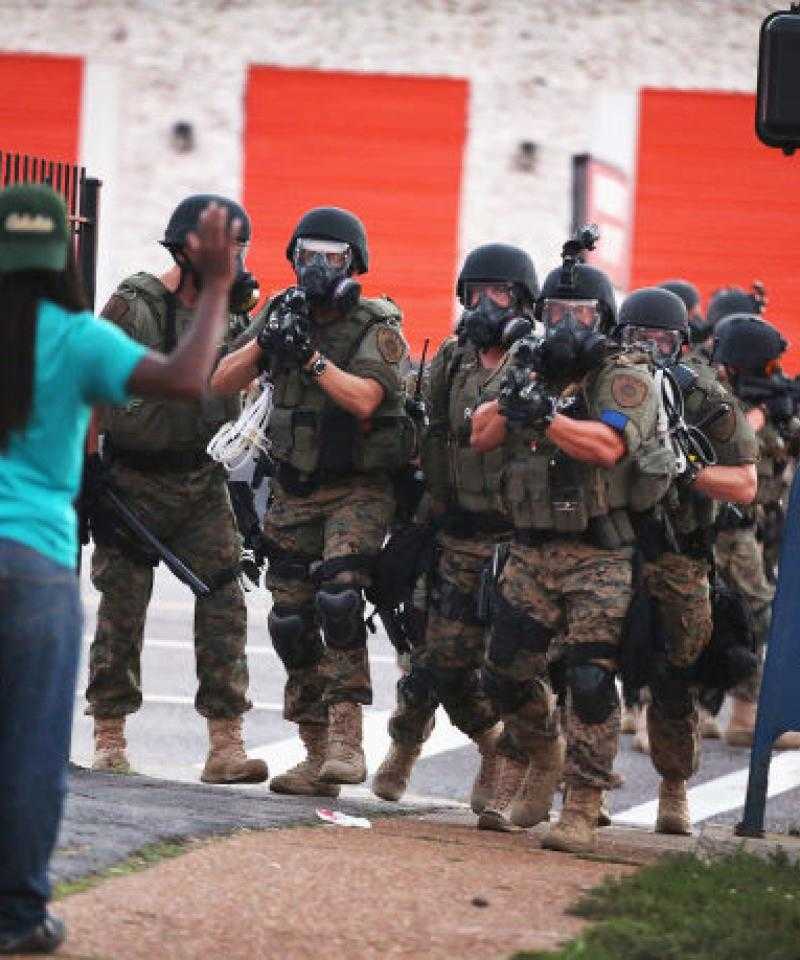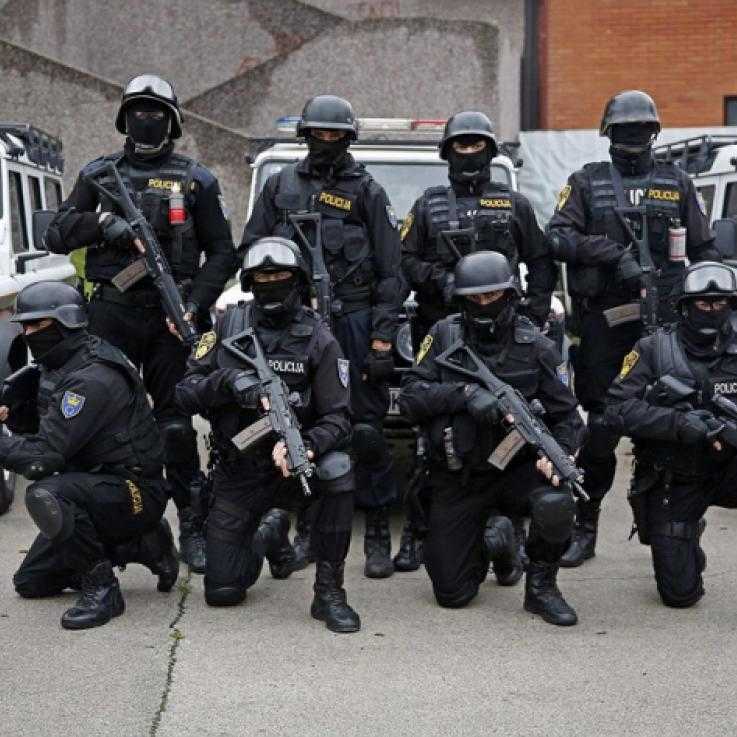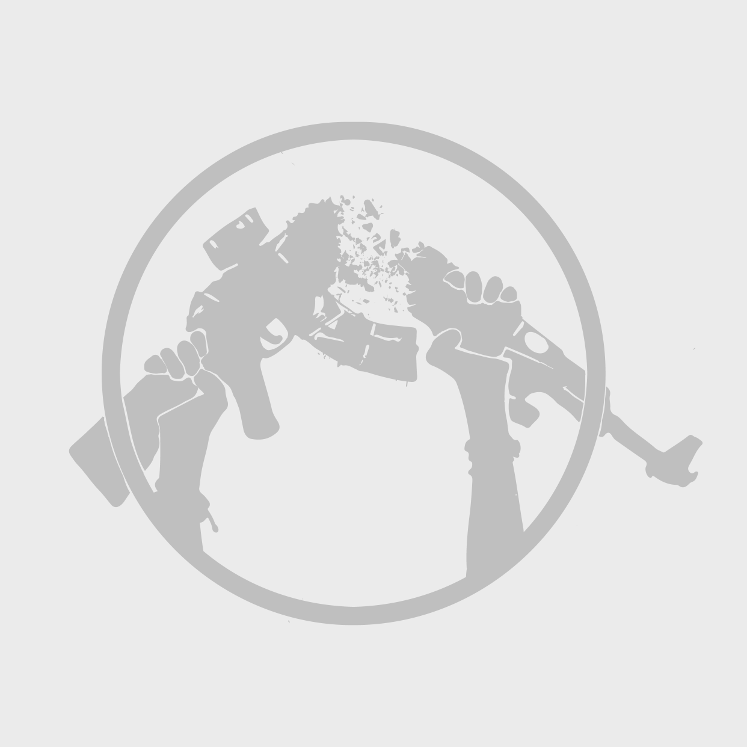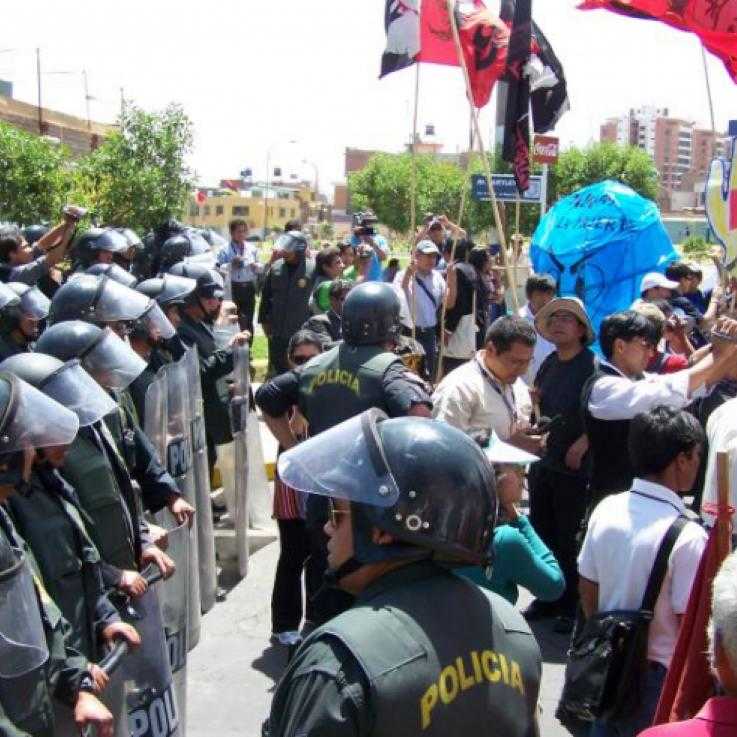Racism and citizenship

The militarised mind is trained to see threat and this means seeing surroundings filled with potential enemies who become dehumanised and ‘othered’ when looked at through this lens. Those identified as potential enemies are almost always, for one reason or another, on the margins of society; they may be political activists, social dissidents, gender nonconformists or poor. But, almost always, they will also be perceived as ‘other’ in racialised terms. The militarisation of policing is a militarisation against minority ethnic groups and people of colour the world over.
The ‘war on terror’ has raised the spectre of an Islamic threat and is used to justify militarised policing that targets Muslim communities. Indigenous groups such as the Mapuche in Chile are marked out for protecting their land and resources. Entire neighbourhoods populated by people of colour such as the favelas of Rio de Janiero are deemed a threat to social cohesion and blackness is conflated with criminality and met with violence. Militarised policing is used to sustain the colonial occupations of the lands of one ethnic group by another, such as in Palestine. Militarised policing is “militarized racism” (Linke, 2010).
Militarised borders define who is, and who is not, a citizen: who has rights and merits the protection of the state and who is a threat to the social order. The Schengen Area allows for free movement of people (and, of course, capital) within Fortress Europe whilst undesirables drown on its shores. In “the emerging security state, privileges are maintained by restricting movement through violence”. (Jones, 2016). The militarised border regime is “based on the exclusion of black and brown people” (Segantini, 2017) and “sustains cultural notions of relative human worth” (Linke, 2010). It operates “as an amorphous buffer zone against global mobility and the presumed threat of race” (Linke, 2010).
Border militarisation is taking place “not in response to a military threat but focused entirely on preventing the movement of civilians” (Jones, 2016). Migrants themselves become the threat, “systematically described as “illegal” and presented … as a package of problems that needs resolving in the same way as crime, terrorism or drugs” (Demblon, 2015). On the Australian TV news, images of asylum seekers depict them almost exclusively “in boats, being escorted on and off various forms of transport and behind detention centre fences (which, visually, generally appear indistinguishable from prisons) … the authorities’ use of latex gloves while conducting searches on asylum seekers invokes ideas of dirtiness and disease”. Stewart found that “the representation of asylum seekers as a ‘problem’ and a ‘threat’” in Australian media has morphed into the construction of people seeking asylum as a problem to which a military solution is required (Stewart, 2016). The state “is only happy to be complicit” in this narrative; “it would rather benefit from the growing racist sentiment, capitalizing on its nearly unchecked ability to deepen militarization and surveillance without unmanageable obstruction from public resistance and dissent” (Pimentel, 2016).
Rosas describes the ‘thickening of the border’ whereby border militarisation extends beyond the physical frontier to the ‘interior borderlands’. On the border between the United States and Mexico, drivers may encounter a Border Patrol checkpoint and be questioned about their immigration status anywhere within one hundred miles of the actual border, a zone within which over six million people live. Racial profiling means that “‘brown’ immigrants and all too often their citizen counterparts experience the policing of the US-Mexico divide well beyond the international boundary” (Rosas, 2015). The racist criminalisation of migration has “turned all dark-skinned individuals into potential suspects” (Linke, 2010).
In South Africa, the police responded to a spate of xenophobic attacks in 2015 with the police and military flooding “the streets of trouble spots with armoured personnel carriers” and making mass arrests. But “in practise, undocumented migrants were as much of a target as suspects implicated in xenophobic violence” and the operation has now expanded to “‘address’ drug dens, prostitution rings and the illegal occupation of land and buildings by squatters”. This “de facto militarised response integrates external border policy with domestic social control” (McMichael, 2015). Border security, “is entangled with the militarization of civil society” (Linke, 2010). The “securitization of immigration produces a subsequent ‘insecuritization’ of immigrant communities and all too often [other] marginalized citizens in routine dynamics of policing, detention and deportation, that borders on state terror” (Rosas, 2015).
Militarised policing is supposed to make society safer but the security that it is supposed to ensure is the security of selected groups within society at the expense of those not deemed valuable enough to deserve to live in safety and peace. We are not expected to interrogate whose safety is being protected. Militarised policing did not protect Tamir Rice, a black child who was shot dead by police in Cleveland, United States, in 2014 for playing with a toy gun. In West Papua, far from guaranteeing their safety, the “Indonesia police are making West Papua unsafe for Papuans. The police have become the main actor perpetrating human rights violations against West Papuans” (MacLeod, Moiwend and Pilbrow, 2016).


